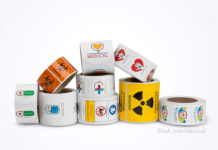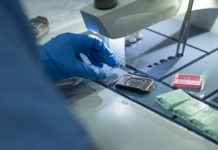
Xylene is a toxic small molecule that has been an integral component of histology over the last several decades. It is primarily used in the clearing process after cells have been fixed and require dehydration; it replaces ethanol, which initially removes the water in the sample, in order to help with wax embedding. When it comes to identification, xylene resides in a special category where exposure is unavoidable, but most labels will not stay affixed to the microscope slide. Interestingly, histology isn’t the only application xylene is used for, with the history of xylene dating back to 1848.
August Cahour’s chemistry
August Cahour was a French chemist who worked in the French Army Corps, the National Museum of Natural History, the École Centrale des Arts et Manufactures, and Ecole Polytechnique. Once he obtained his Ph.D. in 1845, he moved on to become the Chair of General Chemistry Courses at Ecole Centrale. His contribution to science and chemistry was significant, having helped discover many important chemicals, from methanol and hexadecanol to allylic alcohols.
In 1850, he began working with wood tar, distilling liquid from the wood after separation using sulfuric acid, which yielded a floating mass of viscous liquid with an aromatic odor. After washing it, he dried it, added calcium chloride, and distilled it alongside phosphorous pentoxide. By doing this, he was able to separate fractions, one of which had similar properties to benzene; he ultimately called the chemical toluene. Another fraction he separated had similar characteristics to toluene and was ultimately called xylene.
Current uses of xylene
In the medical space, histology is the most popular use of xylene. Interestingly, the xylene used in histology is a mixture of different forms of xylene, including m-xylene, o-xylene, and p-xylene. Though m-xylene is the primary isoform found in most laboratory-grade mixtures, p-xylene likely has the richer history in industrial chemistry, as it is used as a “feedstock” for the large-scale synthesis of different polymers. It is used as a component of polyethylene terephthalate (PET), a thermoplastic polyester, which is used in clothes, plastic containers, thermoforming for manufacturing, and resins. More than 50 million tons of PET are produced annually, primarily for fibers and bottles. Plastics also play a significant role in the supply chain of o-xylene; o-xylene is often used in the production of phthalic anhydride, which is involved in making plasticizers for plastics.
Xylene and its substitutes
Despite its routine use in histology applications, xylene is still considered a relatively dangerous chemical, even within the confines of the laboratory. Its odors can act on the central nervous system, causing headaches, dizziness, confusion, loss of coordination, and potentially even death. In an effort to make histochemical analysis safer, companies have begun selling less toxic xylene substitutes and alternatives. These substitutes are miscible with both alcohol and paraffin wax. This includes clearing and deparaffinizing xylene substitutes such as UltraClear™, Clearify™, Histo-Clear™, Formula 83™, and Pro-Par.
- Naphthenic solvents: With a different chemical structure than xylene, they do not produce noxious odors. They may also perform better for clearing than xylene. Examples include Clearify and Formula 83.
- Terpenes: Terpenes, like d-liminene, have toxicity levels that are generally higher than naphthenic solvents, and they are not necessarily compatible with all types of mounting media. They also dry more slowly than xylene. Examples include Histo-Clear.
- UltraClear™ and Pro-Par: These proprietary agents are based on paraffin hydrocarbons. They are less toxic, less flammable, friendlier to the environment, and easier to handle than xylene. However, they may be up to twice as expensive.
The development of these alternatives stems from the impact of xylene on health and the environment. Ultimately, if using a xylene substitute, it is always a good idea to test it beforehand and verify that it is compatible with your protocols. If xylene remains your chemical of choice, ensure the proper procedures are in place to minimize contact and clear vapors from the lab.
LabTAG by GA International is a leading manufacturer of high-performance specialty labels and a supplier of identification solutions used in research and medical labs as well as healthcare institutions.
Reference:
- Wisniak J. Auguste André Thomas Cahours. Educ quím. 2013;24(4):451-460.



